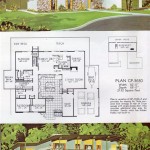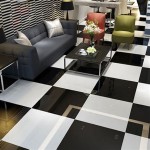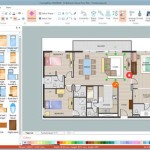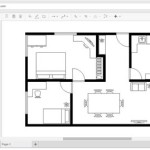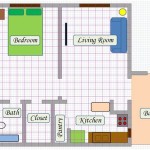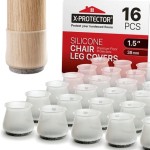Mid-Century Tile Flooring Ideas: A Timeless Aesthetic
Mid-century modern design, a style characterized by clean lines, organic shapes, and a focus on functionality, experienced a resurgence in popularity in recent years. This trend extends to flooring choices, with mid-century tile options offering a blend of vintage charm and contemporary appeal. Selecting the right tile can significantly impact the overall look and feel of a space, making it crucial to understand the key elements that define this iconic style.
The mid-century era, roughly spanning from the late 1940s to the 1960s, saw advancements in manufacturing and materials, which influenced the design landscape. Tile flooring from this period reflected a shift towards simpler aesthetics, playful patterns, and durable materials. Understanding the historical context is crucial for authentically replicating or drawing inspiration from the mid-century modern style.
This article explores various mid-century tile flooring ideas, providing a detailed overview of patterns, colors, materials, and installation tips to help achieve that iconic look. Consideration will be given to adapting these ideas for modern spaces while maintaining the integrity of the original design principles. The goal is to equip readers with the knowledge needed to make informed decisions about incorporating mid-century tile into their homes.
Geometric Patterns: A Defining Characteristic
Geometric patterns are a hallmark of mid-century modern design, and tile flooring is no exception. These patterns often feature simple, repeating shapes such as squares, rectangles, triangles, and hexagons. The use of contrasting colors can further enhance the visual impact of these geometric arrangements.
One popular approach involves creating checkerboard patterns using contrasting colors like black and white, or grey and a vibrant accent color. The simplicity of the checkerboard design provides a timeless appeal that fits well within the mid-century aesthetic. Another variation involves using larger format tiles in a staggered pattern, creating a more subtle but still visually engaging effect.
Hexagonal tiles gained considerable popularity during the mid-century era. These tiles can be arranged in a variety of patterns, from simple honeycomb designs to more complex geometric compositions. Consider incorporating smaller hexagonal tiles in a mosaic-like pattern for a more intricate and detailed look. These mosaics can be laid out in defined areas or allowed to flow organically throughout the space.
Another option involves using patterned tiles that feature geometric motifs. These tiles often incorporate abstract shapes and lines in a repetitive design. Look for tiles with a matte finish to maintain the authenticity of the mid-century style. Be mindful of the scale of the pattern; larger patterns can create a bold statement, while smaller patterns offer a more understated look.
When implementing geometric tile patterns, carefully consider the size of the room. Smaller rooms may benefit from using smaller tiles or patterns to avoid overwhelming the space. Larger rooms can accommodate larger tiles and bolder patterns, creating a more dramatic visual impact. The grout color also plays a significant role in the overall look; a contrasting grout can emphasize the geometric shapes, while a matching grout provides a more seamless appearance.
Color Palettes: Embracing Boldness and Subtlety
The mid-century modern color palette is characterized by a blend of bold, saturated hues and muted, earthy tones. Understanding the color trends of the era is crucial for achieving an authentic mid-century look in your tile flooring choices. While vibrant colors were common, they were often balanced with more neutral tones to create a harmonious and visually appealing space.
Popular colors during this period included avocado green, mustard yellow, burnt orange, turquoise, and pink. These colors were often used in combination with neutral tones such as white, grey, and beige. Incorporating these colors into your tile flooring can instantly evoke the mid-century aesthetic.
Consider using a combination of colored and neutral tiles to create a balanced and visually interesting floor. For example, you could use a field of neutral tiles with a border of colored tiles, or create a pattern that incorporates both colored and neutral elements. Another option is to use a single color for the entire floor, opting for a bold hue like turquoise or a more subtle shade like avocado green.
When selecting a color palette, consider the existing décor of the room. The tile flooring should complement the furniture, walls, and other design elements. If you have primarily neutral furniture, you can afford to be bolder with your tile color choices. Conversely, if you have colorful furniture, you may want to opt for more neutral tile to avoid overwhelming the space. Understanding color theory and how different colors interact with each other will further inform your choices.
Matte finishes were preferred over glossy finishes during the mid-century era. Matte tiles tend to have a more muted and earthy appearance, which aligns with the overall design philosophy of the period. Glossy tiles, on the other hand, can appear more modern and sleek, which may not be appropriate for a mid-century inspired space. When choosing the color of your tile grout, consider contrasting or matching the tile's color to achieve the desired visual effect.
Material Selection: Prioritizing Durability and Authenticity
The choice of materials is crucial for achieving a truly authentic mid-century modern look in your tile flooring. While ceramic and porcelain tiles are commonly used today, other materials like vinyl and linoleum were also popular choices during the mid-century era. Understanding the characteristics of each material will help you make an informed decision that aligns with your design goals and budget.
Ceramic tiles are a versatile and affordable option for mid-century tile flooring. They come in a wide range of colors, patterns, and sizes, making them suitable for various design styles. Porcelain tiles are more durable and water-resistant than ceramic tiles, making them a better choice for high-traffic areas or rooms with high moisture levels, such as bathrooms and kitchens. Both ceramic and porcelain tiles can be manufactured to resemble the textures and finishes of other materials, providing diverse aesthetic possibilities.
Vinyl tiles were a popular choice during the mid-century era due to their affordability, durability, and ease of maintenance. Today's vinyl tiles are available in a variety of styles, some of which are designed to mimic the look of ceramic, porcelain, or even wood. Luxury Vinyl Tile (LVT) is a particularly popular option, as it offers a high level of durability and realism. Consider vinyl tiles if you are looking for a budget-friendly and easy-to-install flooring option.
Linoleum is another material that was commonly used in mid-century homes. It is a natural and sustainable material made from linseed oil, wood flour, and other natural ingredients. Linoleum is durable, water-resistant, and easy to clean. It also has a unique texture and appearance that is reminiscent of the mid-century era. While linoleum may be more expensive than vinyl, it is a more environmentally friendly option. Consider linoleum if sustainability is a priority in your design choices.
When selecting materials, consider the overall aesthetic of the room and the level of authenticity you are trying to achieve. If you are aiming for a true-to-period look, consider using materials that were commonly used during the mid-century era, such as vinyl or linoleum. If durability and water resistance are more important, opt for ceramic or porcelain tiles. Weigh the pros and cons of each material and choose the one that best meets your needs and budget. For instance, using stone look porcelain tile can provide the aesthetic of real slate while offering the durability and lower maintenance costs of porcelain.
Understanding the nuances of mid-century modern tile flooring can transform a space, imbuing it with a sense of vintage charm and timeless style. By carefully considering patterns, colors, and materials, homeowners can create a flooring design that is both aesthetically pleasing and functional. The key is to balance the bold design elements of the era with a sense of simplicity and restraint, ensuring that the flooring complements the overall aesthetic of the space.

10 Stunning Mid Century Modern Tiles

Best Mid Century Modern Flooring Options To Fit Your Style Inc

Best Mid Century Modern Flooring Options To Fit Your Style Inc

Fabulous Mid Century Flooring Kitchen Inspirations Gorgeous Tile

Mid Century Modern Bathroom Design Inspiration And How To Achieve The Look Tile Republic Best In Tiles Bathware Online

Stunning Spectacular 1961 Mid Century Modern Time Capsule House In Minnesota 66 Phot Interiors

26 Midcentury Modern Bathroom Tile Ideas That Are Charming As Can Be Hunker

Mid Century Modern Bathroom Tile Atomic Ranch

Mid Century Modern Bathroom Design Inspiration And How To Achieve The Look Tile Republic Best In Tiles Bathware Online

16 Mid Century Modern Foyer Ideas
